27 October 2023
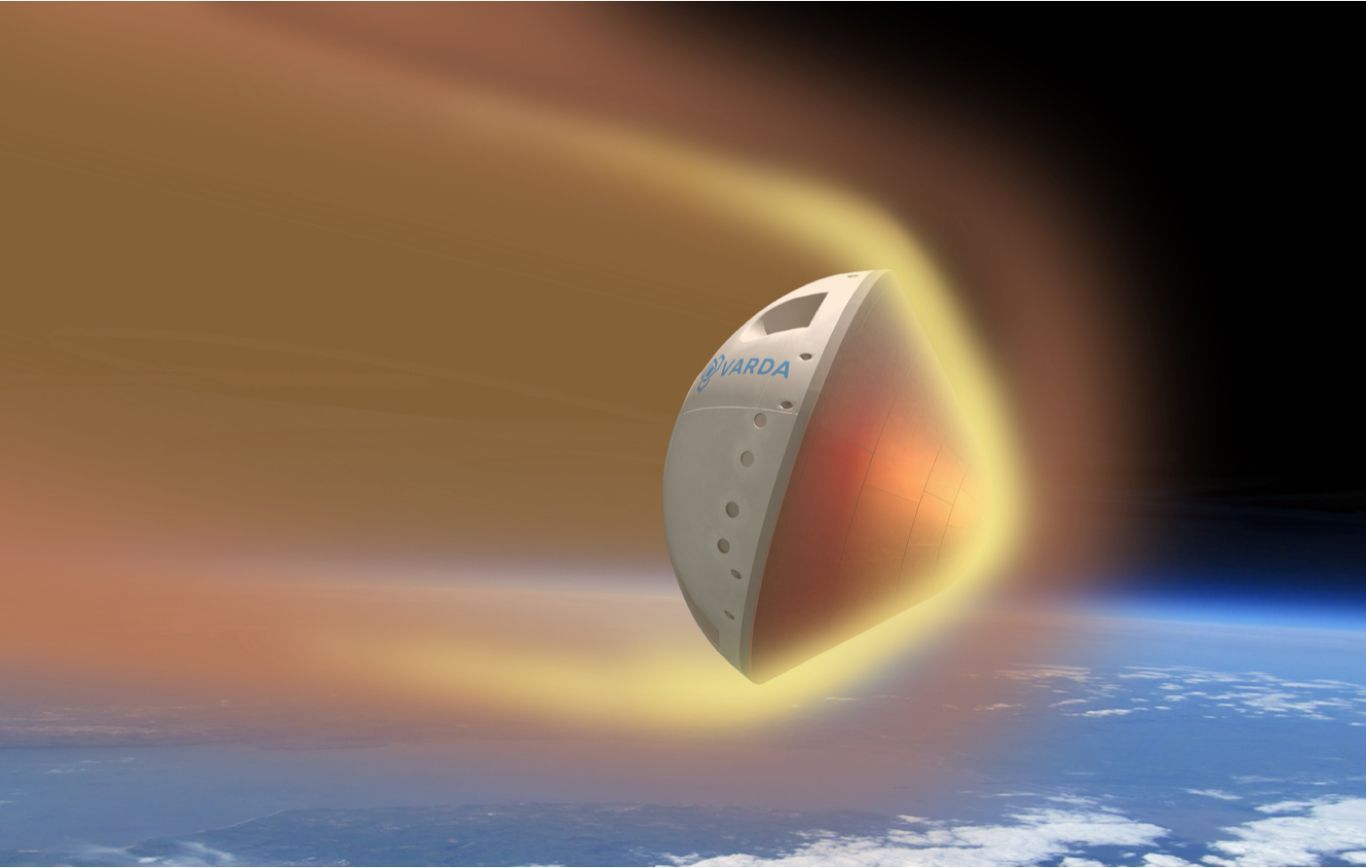
Varda's W-1 atmospheric re-entry (Varda Space)
It’s just over 46 years since the iconic Voyager-1 and 2 mission launched and despite the primary mission being completed in 1989 (flying close-by Neptune) they both remain active on their journey into interstellar space and continue to send useful data back to Earth.
NASA scientists have recently been on a mission to send software fixes to the probes after Voyager-1 was sending back corrupted data, and to also to find a measure that would fix the issue of a build-up of residue left behind by the firing of their thrusters. Despite the ageing hardware onboard, scientists were able to fix the hardware bug and also find a way to allow the probes to rotate more, thus reducing the need to fire their thrusters as often. This manoeuvre, they expect, will keep fuel available for another 5 years.
The Voyager mission is an ongoing testament to what humankind is capable of doing in our quest to explore and understand space. However, we are now living in an age of New Space, where the leaps in our technology are being commanded by the private sector.
Moreover, we’re beginning to see how space will become the benefit of humanity and our planet, beyond only satellite communications and Earth observation, but through industries such as in-orbit manufacturing, space-based solar power and space mining.
Just this week CEOs were speaking at the Riyadh’s Future Investment Initiative forum, discussing how space will be necessary to tackle some of humankind’s most pressing problems, through initiatives such as space agriculture. Barbara Belvisi, founder and CEO of Interstellar Lab stressed the importance of this technology, as Earth’s population grows and climate change presents increasing challenges for traditional farming.
Also, the CEOs of Satellogic and Space Cargo Unlimited agreed that in-space manufacturing has the potential to manufacture products with high precision, taking advantage of the beneficial space environment. Furthermore, this is all being made possible by the drastic reduction in costs of space launch services, pioneered by companies such as SpaceX.
We’re reaching a new milestone, where we’re not only exploring the depths of space, but also beginning to utilise it in order to better our existence.
In-space servicing, assembly, and manufacturing (ISAM) growth
In recent weeks we’ve read heard announcements regarding the development of ISAM technologies from companies such as Astroscale (Japan), Space Forge (UK) and Varda Space (US). The latter this year achieved success in launching the first in-space factory, producing pharmaceuticals aboard its W-Series 1 satellite. The vacuum of space and the benefits of micro-gravity are utilised for the production of delicate materials such as pharmaceuticals and materials for semiconductors.
Varda also made history in becoming the first company to apply for a re-entry licence, in order to return their finished product to Earth. However, they were denied a license in September, with the FAA stating they “…did not demonstrate compliance with the regulatory requirements.” But they may have sourced a solution.
Varda have announced they will aim to work with Southern Launch, based in Australia, in order to carry out re-entry operations at the Koonibba Test Range, Southern Australia. The agreement may not be established in time to rescue their first mission (currently still in orbit with enough provisions to survive until June), but looks to be approved and used for re-entry of their second mission in mid-2024. This is all new territory and Varda are setting new precedents in the field of ISAM.
Additionally, German firms Rocket Factory Augsburg (RFA), Yuri and ATMOS Space Cargo have also announced that they will be teaming-up to provide services such as microgravity environments and in-space manufacturing. RFA will provide launch services and ATMOS will develop re-entry vehicles, while Yuri will develops modular bioreactors and incubators.
Validating off-world mining
Lunar and asteroid mining may seemingly be some way off becoming reality, but could also play a vital role in the evolution of in-space manufacturing. Mining space resources would remove the need to launch resources from the ground, and reduce reliance on the rare and finite supply of precious materials on Earth.
NASA’s OSRIS-REx mission, while not necessarily an asteroid mining mission, has returned impressive results so far, gathering a far bigger sample of the Bennu asteroid than expected. Scientists had hoped to collect at least 60 grams of material from the asteroid, but have already retrieved 70.3 grams, and have yet to open the capsule itself. "The sample processed so far includes the rocks and dust found on the outside of the sampler head, as well as a portion of the bulk sample from inside the head, which was accessed through the head’s mylar flap," a NASA blogpost states.
NASA have so far discovered that the asteroid sample is made-up of high carbon and water content, which may prove that life on Earth was kick-started by such asteroids. The ongoing analysis may also help determine how to deflect such asteroids in future, or even indicate what resources could be extracted from them.
Furthermore, two teams of economists have been researching the viability of asteroid mining, with the papers being published in the Proceedings of the National Academy of Sciences this month. The first paper claims that space activities tend to advance the endeavours and profits of companies who utilise them, and thus the same will be true of asteroid mining. The second goes further, to state that metal mining of asteroids will become the main source of these materials in future, as the cost of operating in space declines.
Transastra (US), a company with the ultimate aim of off-world mining, were this week honoured by TIME on its list of Best Inventions of 2023, for a vehicle that may eventually be used to extract space resources. Their FlyTrap spacecraft is initially designed to capture and remove pace debris, using its its rip-stop inflatable bags, allowing it to capture small cubsats or even large objects such as spent rockets. Furthermore, it’s anticipated that the same technology could used to capture asteroids for mining.
The company are taking a step-by-step approach to space mining, first working in the field of space logistics and developing the orbital infrastructure, to eventually mining other celestial bodies.
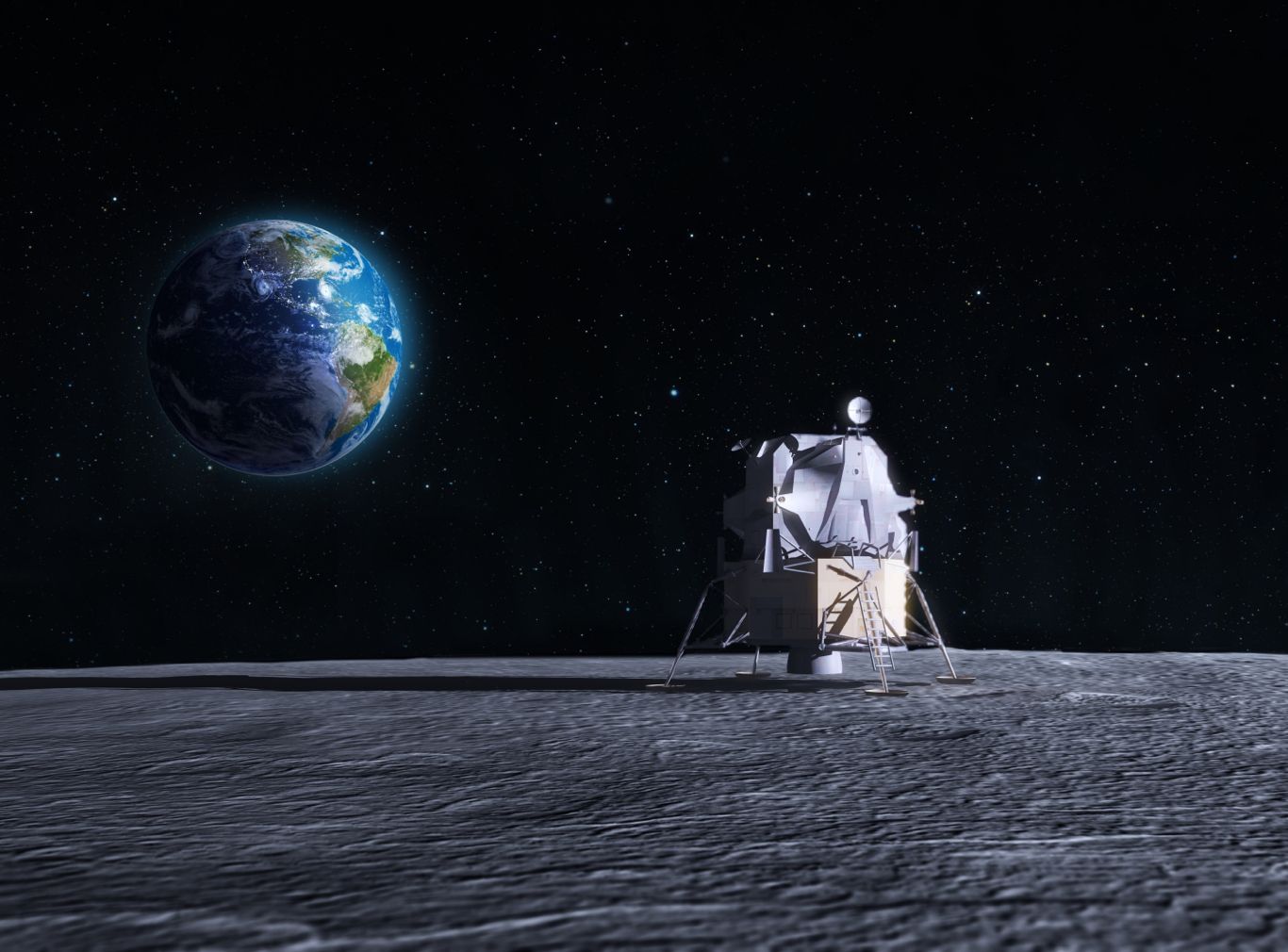
(Adobe)
Moon landers and commercial lunar activity
Intuitive Machines (US) will launch next month, hoping to become the first commercial company to successfully land on the Moon. Astrobotic (US) are looking to follow closely in their footsteps and this week finally received a mission update.
The company are due to launch with ULA on their new Vulcan Centaur rocket, but have faced ongoing delays. They have now revealed that Vulcan is due to launch on Christmas Eve, allowing for Astrobotic to play their role in the growing commercialisation of the lunar economy.
Further to this, Singapore-based company Qosmosys have announced that they have secured $100 million in funding to support their lunar landing effort, using their ZeusX spacecraft. Their mission will consist of a service module, a lander and a rover designed to extract lunar resources, with an aim to launch the mission within 4 years. Furthermore, the company state that their core aim is to extract and utilise lunar resources, such as Helium-3.
(According to their website) “Central to our business model is lunar mining, particularly the extraction of essential resources and minerals like the helium-3 isotope (3He).” Helium-3 could provide the solution to Earth’s energy needs, once nuclear fusion technology can be used at scale.
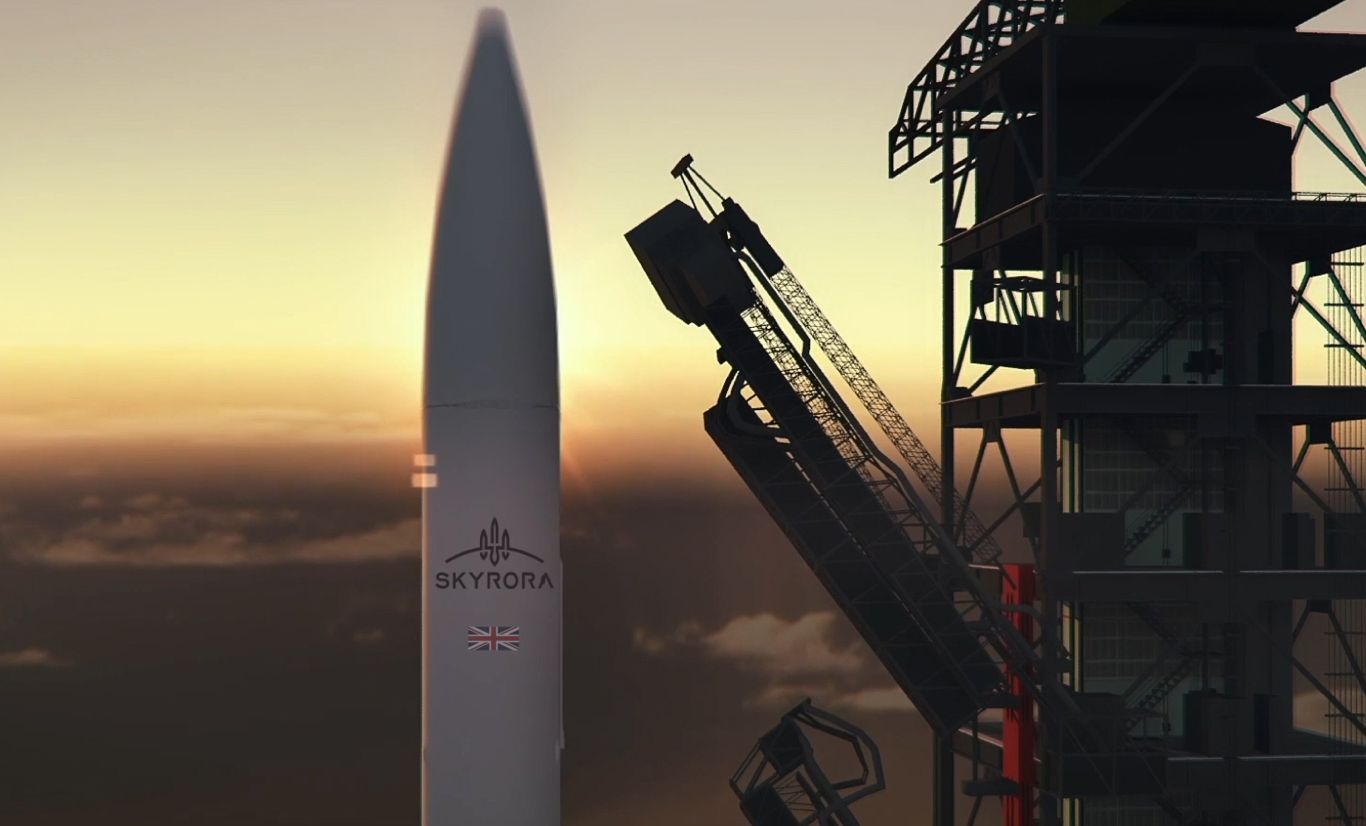
Skyrora (UK) were chosen as part of Boost! (Skyrora)
Australia becoming southern hemisphere leader, EU commercial launch programme and China expand alliance
As as well looking to provide reentry facilities for Varda Space, Australia seems to making progress in the way of becoming the leading space nation in the southern hemisphere.
Head of the state of Western Australia, Roger Cook, has announced a $5 million support for Fugro SpAARC (Fugro's Space Automation, AI and Robotics Control Complex) operations. The funding will build on their operational capability and help bring in international experts, facilitating international space missions from Australia.
Roger Cook said: “…Fugro SpAARC will capitalise on our significant space infrastructure and capabilities to position WA as the Southern Hemisphere's global hub for space operations and exploration.”
Furthermore, it is expected that a first state visit to the US by Australian prime minister, Anthony Albanese, will be used in part to establish an agreement that would allow for US commercial companies to launch from there. “I suspect this will link to the finalization or implementation of the technical safeguards agreement which will allow US commercial launch companies to operate from Australian launch sites,” Bec Shrimpton, national security director at the Australian Strategic Policy Institute, told Breaking Defense.
NASA carried out their first launch from an Australian commercial launch facility last August, but now with increased access for US commercial launch companies, Australia looks set to become a growing force in New Space.
European and Chinese commercial launch reliance
The European Commission and ESA have also taken steps to reach out further to the commercial sector in their quest to establish independent European access to space. The new European Flight Ticket Initiative is designed to boost European launch systems through open competition “…starting with In-orbit Demonstration and Validation (IOD/IOV) needs” (ESA).
The programme will use only European manufactured vehicles, funded through the EU Horizon Europe programme and the ESA Boost! programme, the latter which is used “…to stimulate, encourage, and support the development, deployment, and use of new European commercial space transportation services” (ESA).
The UK Space Agency is also expanding its reliance on commercial partners, as this week they announced that they will work with US-based space infrastructure developer, Axiom Space, in order to facilitate their first commercially sponsored astronaut flight.
China reach out to launch startups and expand alliance
Chinese commercial launch startups also received good news, with the China Manned Space Engineering Office (CMSEO) opening a call for low-cost cargo launches to the Tiangong space station, in May this year.
The chosen proposals came from state entities, but according to Lin Xiqiang, deputy director of CMSEO, a number of the proposals chose launch services provided by the commercial sector.
Chinese launch startups (such as) Landspace, Galactic Energy and Space Pioneer will find this welcoming news as the nation seemingly continue to look to replicate the roaring success of commercialisation in the US.
Yet the biggest news coming out of China this week regards its International Research Station (ILRS) project, a program rivalling the US-led Artemis Accords, aiming to establish a vision and regulatory framework for the future of space. In quick succession, Pakistan and Belarus became the latest members, with the ILRS project now numbering 11 members. The Artemis Accords currently has 29 members.
It seems unlikely still that the US would be willing to join the ILRS project, nor would China be encouraged to join the Artemis Accords, throwing doubt on the ability of the world’s space superpowers to guarantee a peaceful future in outer space.
There was, however, a glimmer of hope as it is understood that officials from both nations recently met at the International Astronautical Congress in Baku, Azerbaijan, in order to discuss how to better share data regarding Space Situational Awareness (SSA) and possibly creating a “federated network” of regional SSA providers.
Guaranteeing safety of operations on orbit of course comes as a benefit for both parties, and so such discussions may not come as a surprise. However, this may at least also offer another means by which these rival nations can begin to foster better relations in space, for the benefit of all.
Our future in space
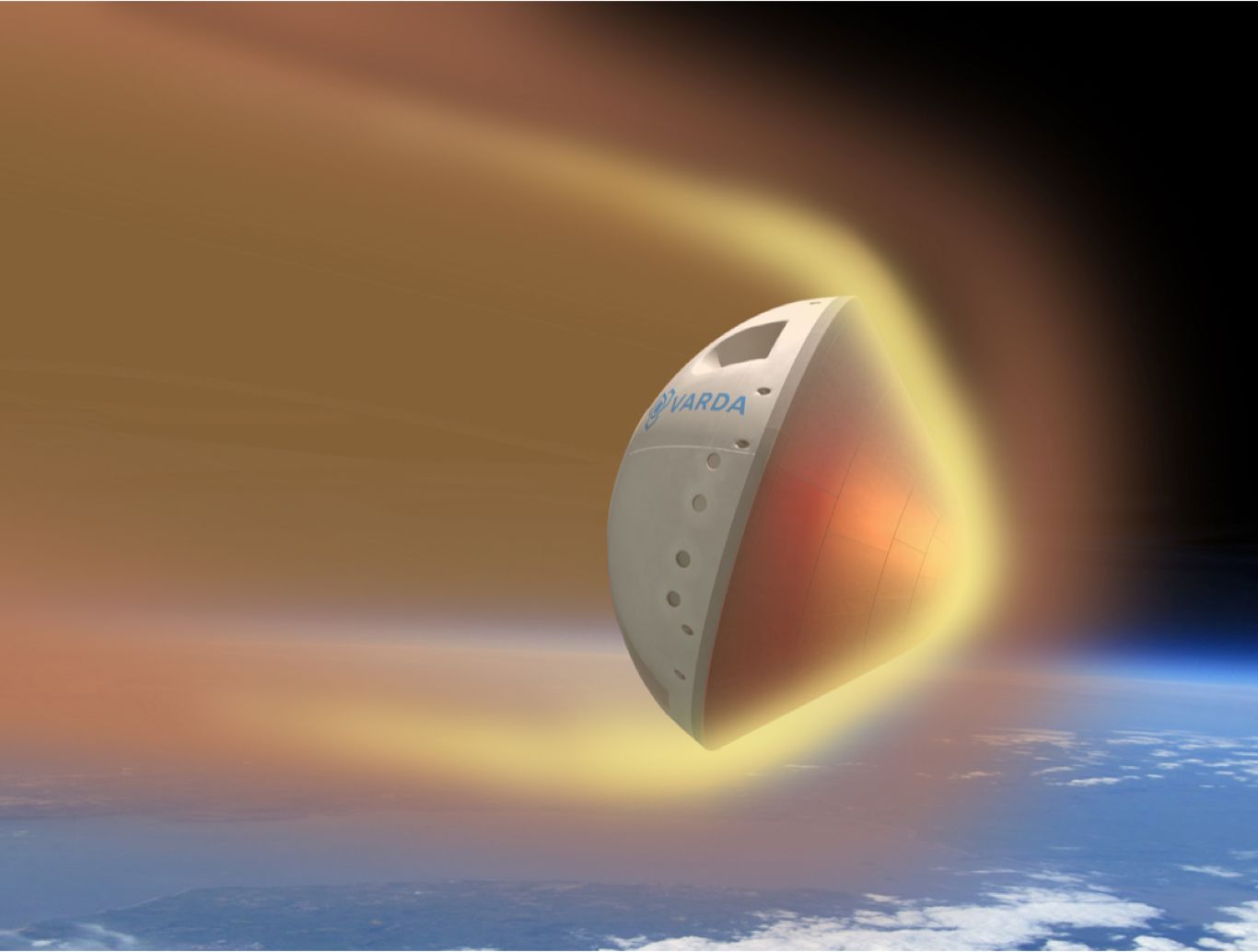
(Image: Adobe)
27 October 2023
Singapore's moon lander raises $100m, Astrobotic get lunar launch date, growth of in-space manufacturing…..and more - Space News Roundup
It’s just over 46 years since the iconic Voyager-1 and 2 mission launched and despite the primary mission being completed in 1989 (flying close-by Neptune) they both remain active on their journey into interstellar space and continue to send useful data back to Earth.
NASA scientists have recently been on a mission to send software fixes to the probes after Voyager-1 was sending back corrupted data, and to also to find a measure that would fix the issue of a build-up of residue left behind by the firing of their thrusters. Despite the ageing hardware onboard, scientists were able to fix the hardware bug and also find a way to allow the probes to rotate more, thus reducing the need to fire their thrusters as often. This manoeuvre, they expect, will keep fuel available for another 5 years.
The Voyager mission is an ongoing testament to what humankind is capable of doing in our quest to explore and understand space. However, we are now living in an age of New Space, where the leaps in our technology are being commanded by the private sector.
Moreover, we’re beginning to see how space will become the benefit of humanity and our planet, beyond only satellite communications and Earth observation, but through industries such as in-orbit manufacturing, space-based solar power and space mining.
Just this week CEOs were speaking at the Riyadh’s Future Investment Initiative forum, discussing how space will be necessary to tackle some of humankind’s most pressing problems, through initiatives such as space agriculture. Barbara Belvisi, founder and CEO of Interstellar Lab stressed the importance of this technology, as Earth’s population grows and climate change presents increasing challenges for traditional farming.
Also, the CEOs of Satellogic and Space Cargo Unlimited agreed that in-space manufacturing has the potential to manufacture products with high precision, taking advantage of the beneficial space environment. Furthermore, this is all being made possible by the drastic reduction in costs of space launch services, pioneered by companies such as SpaceX.
We’re reaching a new milestone, where we’re not only exploring the depths of space, but also beginning to utilise it in order to better our existence.
In-space servicing, assembly, and manufacturing (ISAM) growth
In recent weeks we’ve read heard announcements regarding the development of ISAM technologies from companies such as Astroscale (Japan), Space Forge (UK) and Varda Space (US). The latter this year achieved success in launching the first in-space factory, producing pharmaceuticals aboard its W-Series 1 satellite. The vacuum of space and the benefits of micro-gravity are utilised for the production of delicate materials such as pharmaceuticals and materials for semiconductors.
Varda also made history in becoming the first company to apply for a re-entry licence, in order to return their finished product to Earth. However, they were denied a license in September, with the FAA stating they “…did not demonstrate compliance with the regulatory requirements.” But they may have sourced a solution.
Varda have announced they will aim to work with Southern Launch, based in Australia, in order to carry out re-entry operations at the Koonibba Test Range, Southern Australia. The agreement may not be established in time to rescue their first mission (currently still in orbit with enough provisions to survive until June), but looks to be approved and used for re-entry of their second mission in mid-2024. This is all new territory and Varda are setting new precedents in the field of ISAM.
Additionally, German firms Rocket Factory Augsburg (RFA), Yuri and ATMOS Space Cargo have also announced that they will be teaming-up to provide services such as microgravity environments and in-space manufacturing. RFA will provide launch services and ATMOS will develop re-entry vehicles, while Yuri will develops modular bioreactors and incubators.
Validating off-world mining
Lunar and asteroid mining may seemingly be some way off becoming reality, but could also play a vital role in the evolution of in-space manufacturing. Mining space resources would remove the need to launch resources from the ground, and reduce reliance on the rare and finite supply of precious materials on Earth.
NASA’s OSRIS-REx mission, while not necessarily an asteroid mining mission, has returned impressive results so far, gathering a far bigger sample of the Bennu asteroid than expected. Scientists had hoped to collect at least 60 grams of material from the asteroid, but have already retrieved 70.3 grams, and have yet to open the capsule itself. "The sample processed so far includes the rocks and dust found on the outside of the sampler head, as well as a portion of the bulk sample from inside the head, which was accessed through the head’s mylar flap," a NASA blogpost states.
NASA have so far discovered that the asteroid sample is made-up of high carbon and water content, which may prove that life on Earth was kick-started by such asteroids. The ongoing analysis may also help determine how to deflect such asteroids in future, or even indicate what resources could be extracted from them.
Furthermore, two teams of economists have been researching the viability of asteroid mining, with the papers being published in the Proceedings of the National Academy of Sciences this month. The first paper claims that space activities tend to advance the endeavours and profits of companies who utilise them, and thus the same will be true of asteroid mining. The second goes further, to state that metal mining of asteroids will become the main source of these materials in future, as the cost of operating in space declines.
Transastra (US), a company with the ultimate aim of off-world mining, were this week honoured by TIME on its list of Best Inventions of 2023, for a vehicle that may eventually be used to extract space resources. Their FlyTrap spacecraft is initially designed to capture and remove pace debris, using its its rip-stop inflatable bags, allowing it to capture small cubsats or even large objects such as spent rockets. Furthermore, it’s anticipated that the same technology could used to capture asteroids for mining.
The company are taking a step-by-step approach to space mining, first working in the field of space logistics and developing the orbital infrastructure, to eventually mining other celestial bodies.
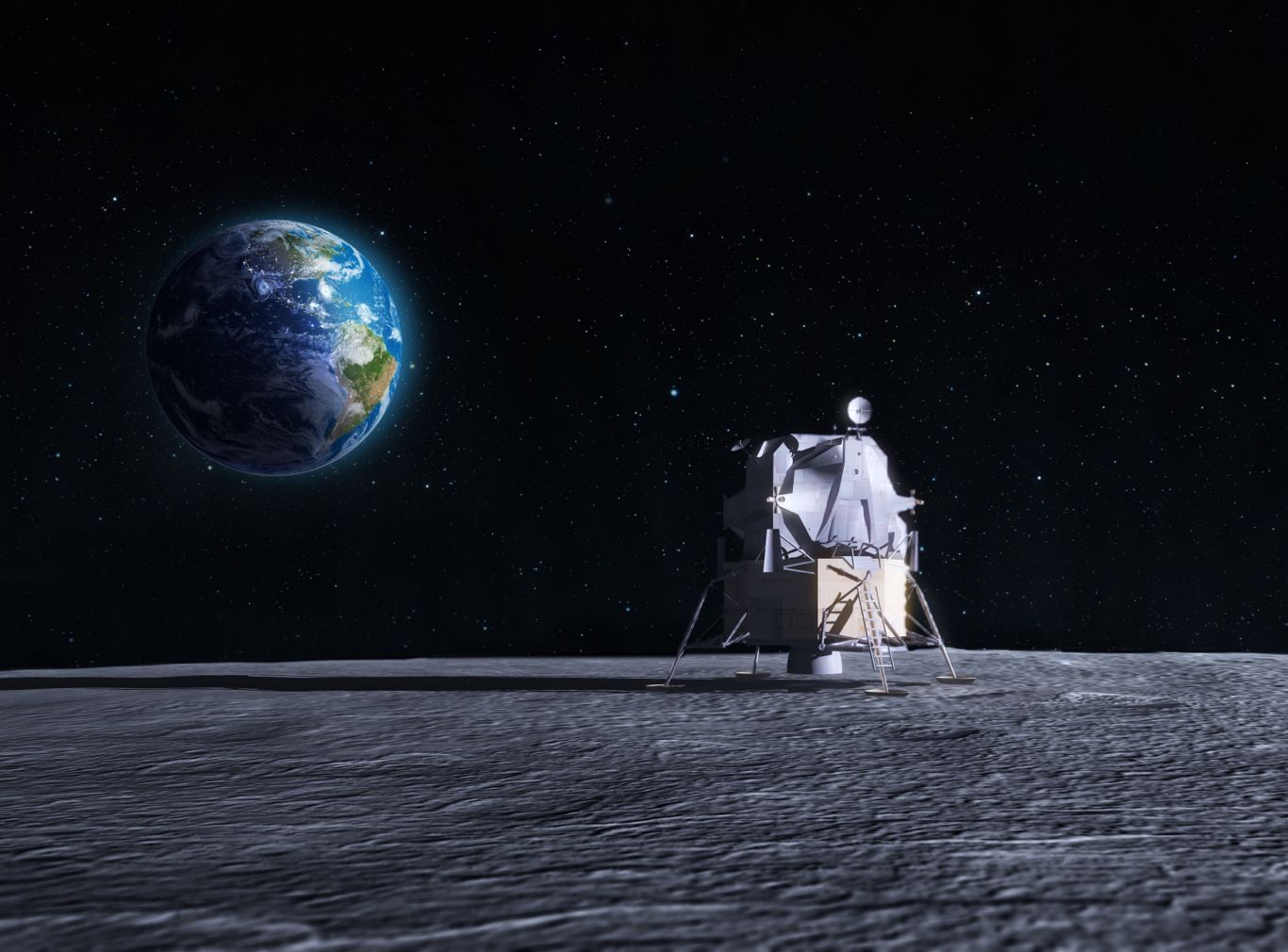
(Adobe)
Moon landers and commercial lunar activity
Intuitive Machines (US) will launch next month, hoping to become the first commercial company to successfully land on the Moon. Astrobotic (US) are looking to follow closely in their footsteps and this week finally received a mission update.
The company are due to launch with ULA on their new Vulcan Centaur rocket, but have faced ongoing delays. They have now revealed that Vulcan is due to launch on Christmas Eve, allowing for Astrobotic to play their role in the growing commercialisation of the lunar economy.
Further to this, Singapore-based company Qosmosys have announced that they have secured $100 million in funding to support their lunar landing effort, using their ZeusX spacecraft. Their mission will consist of a service module, a lander and a rover designed to extract lunar resources, with an aim to launch the mission within 4 years. Furthermore, the company state that their core aim is to extract and utilise lunar resources, such as Helium-3.
(According to their website) “Central to our business model is lunar mining, particularly the extraction of essential resources and minerals like the helium-3 isotope (3He).” Helium-3 could provide the solution to Earth’s energy needs, once nuclear fusion technology can be used at scale.
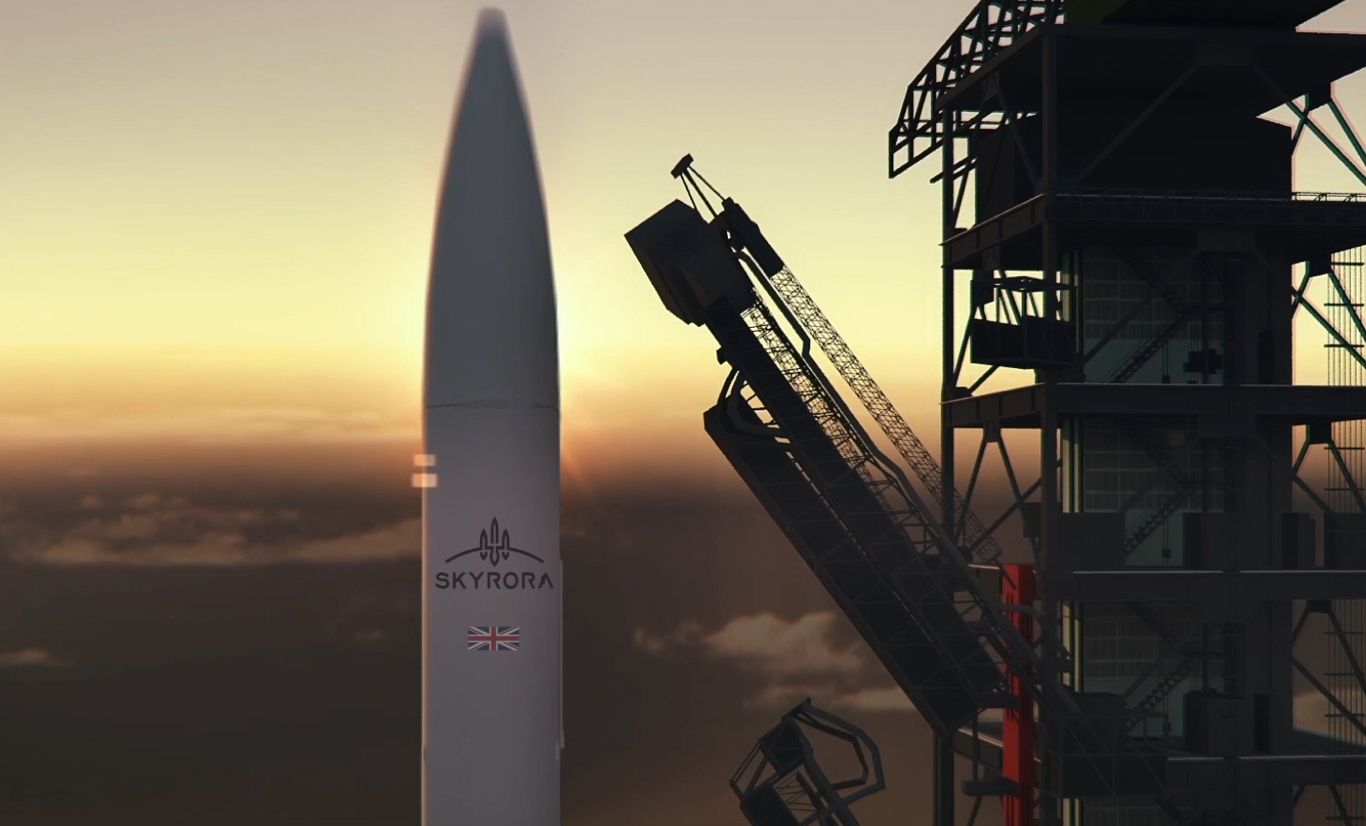
Skyrora (UK) were chosen as part of Boost! (Skyrora)
Australia becoming southern hemisphere leader, EU commercial launch programme and China expand alliance
As as well looking to provide reentry facilities for Varda Space, Australia seems to making progress in the way of becoming the leading space nation in the southern hemisphere.
Head of the state of Western Australia, Roger Cook, has announced a $5 million support for Fugro SpAARC (Fugro's Space Automation, AI and Robotics Control Complex) operations. The funding will build on their operational capability and help bring in international experts, facilitating international space missions from Australia.
Roger Cook said: “…Fugro SpAARC will capitalise on our significant space infrastructure and capabilities to position WA as the Southern Hemisphere's global hub for space operations and exploration.”
Furthermore, it is expected that a first state visit to the US by Australian prime minister, Anthony Albanese, will be used in part to establish an agreement that would allow for US commercial companies to launch from there. “I suspect this will link to the finalization or implementation of the technical safeguards agreement which will allow US commercial launch companies to operate from Australian launch sites,” Bec Shrimpton, national security director at the Australian Strategic Policy Institute, told Breaking Defense.
NASA carried out their first launch from an Australian commercial launch facility last August, but now with increased access for US commercial launch companies, Australia looks set to become a growing force in New Space.
European and Chinese commercial launch reliance
The European Commission and ESA have also taken steps to reach out further to the commercial sector in their quest to establish independent European access to space. The new European Flight Ticket Initiative is designed to boost European launch systems through open competition “…starting with In-orbit Demonstration and Validation (IOD/IOV) needs” (ESA).
The programme will use only European manufactured vehicles, funded through the EU Horizon Europe programme and the ESA Boost! programme, the latter which is used “…to stimulate, encourage, and support the development, deployment, and use of new European commercial space transportation services” (ESA).
The UK Space Agency is also expanding its reliance on commercial partners, as this week they announced that they will work with US-based space infrastructure developer, Axiom Space, in order to facilitate their first commercially sponsored astronaut flight.
China reach out to launch startups and expand alliance
Chinese commercial launch startups also received good news, with the China Manned Space Engineering Office (CMSEO) opening a call for low-cost cargo launches to the Tiangong space station, in May this year.
The chosen proposals came from state entities, but according to Lin Xiqiang, deputy director of CMSEO, a number of the proposals chose launch services provided by the commercial sector.
Chinese launch startups (such as) Landspace, Galactic Energy and Space Pioneer will find this welcoming news as the nation seemingly continue to look to replicate the roaring success of commercialisation in the US.
Yet the biggest news coming out of China this week regards its International Research Station (ILRS) project, a program rivalling the US-led Artemis Accords, aiming to establish a vision and regulatory framework for the future of space. In quick succession, Pakistan and Belarus became the latest members, with the ILRS project now numbering 11 members. The Artemis Accords currently has 29 members.
It seems unlikely still that the US would be willing to join the ILRS project, nor would China be encouraged to join the Artemis Accords, throwing doubt on the ability of the world’s space superpowers to guarantee a peaceful future in outer space.
There was, however, a glimmer of hope as it is understood that officials from both nations recently met at the International Astronautical Congress in Baku, Azerbaijan, in order to discuss how to better share data regarding Space Situational Awareness (SSA) and possibly creating a “federated network” of regional SSA providers.
Guaranteeing safety of operations on orbit of course comes as a benefit for both parties, and so such discussions may not come as a surprise. However, this may at least also offer another means by which these rival nations can begin to foster better relations in space, for the benefit of all.
Share this article
27 October 2023
Singapore's moon lander raises $100m, Astrobotic get lunar launch date, growth of in-space manufacturing…..and more - Space News Roundup
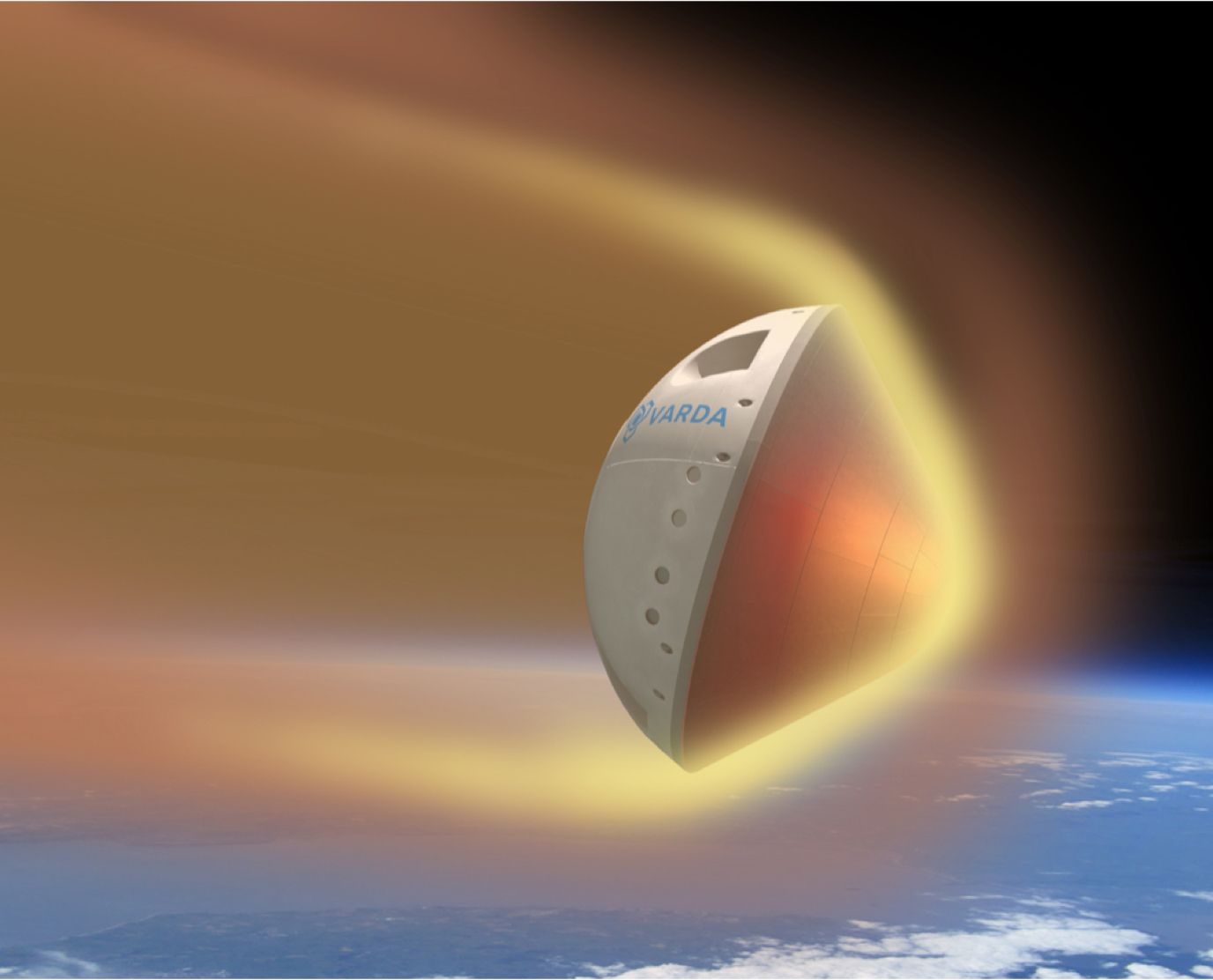
Varda's W-1 atmospheric re-entry (Varda Space)
It’s just over 46 years since the iconic Voyager-1 and 2 mission launched and despite the primary mission being completed in 1989 (flying close-by Neptune) they both remain active on their journey into interstellar space and continue to send useful data back to Earth.
NASA scientists have recently been on a mission to send software fixes to the probes after Voyager-1 was sending back corrupted data, and to also to find a measure that would fix the issue of a build-up of residue left behind by the firing of their thrusters. Despite the ageing hardware onboard, scientists were able to fix the hardware bug and also find a way to allow the probes to rotate more, thus reducing the need to fire their thrusters as often. This manoeuvre, they expect, will keep fuel available for another 5 years.
The Voyager mission is an ongoing testament to what humankind is capable of doing in our quest to explore and understand space. However, we are now living in an age of New Space, where the leaps in our technology are being commanded by the private sector.
Moreover, we’re beginning to see how space will become the benefit of humanity and our planet, beyond only satellite communications and Earth observation, but through industries such as in-orbit manufacturing, space-based solar power and space mining.
Just this week CEOs were speaking at the Riyadh’s Future Investment Initiative forum, discussing how space will be necessary to tackle some of humankind’s most pressing problems, through initiatives such as space agriculture. Barbara Belvisi, founder and CEO of Interstellar Lab stressed the importance of this technology, as Earth’s population grows and climate change presents increasing challenges for traditional farming.
Also, the CEOs of Satellogic and Space Cargo Unlimited agreed that in-space manufacturing has the potential to manufacture products with high precision, taking advantage of the beneficial space environment. Furthermore, this is all being made possible by the drastic reduction in costs of space launch services, pioneered by companies such as SpaceX.
We’re reaching a new milestone, where we’re not only exploring the depths of space, but also beginning to utilise it in order to better our existence.
In-space servicing, assembly, and manufacturing (ISAM) growth
In recent weeks we’ve read heard announcements regarding the development of ISAM technologies from companies such as Astroscale (Japan), Space Forge (UK) and Varda Space (US). The latter this year achieved success in launching the first in-space factory, producing pharmaceuticals aboard its W-Series 1 satellite. The vacuum of space and the benefits of micro-gravity are utilised for the production of delicate materials such as pharmaceuticals and materials for semiconductors.
Varda also made history in becoming the first company to apply for a re-entry licence, in order to return their finished product to Earth. However, they were denied a license in September, with the FAA stating they “…did not demonstrate compliance with the regulatory requirements.” But they may have sourced a solution.
Varda have announced they will aim to work with Southern Launch, based in Australia, in order to carry out re-entry operations at the Koonibba Test Range, Southern Australia. The agreement may not be established in time to rescue their first mission (currently still in orbit with enough provisions to survive until June), but looks to be approved and used for re-entry of their second mission in mid-2024. This is all new territory and Varda are setting new precedents in the field of ISAM.
Additionally, German firms Rocket Factory Augsburg (RFA), Yuri and ATMOS Space Cargo have also announced that they will be teaming-up to provide services such as microgravity environments and in-space manufacturing. RFA will provide launch services and ATMOS will develop re-entry vehicles, while Yuri will develops modular bioreactors and incubators.
Validating off-world mining
Lunar and asteroid mining may seemingly be some way off becoming reality, but could also play a vital role in the evolution of in-space manufacturing. Mining space resources would remove the need to launch resources from the ground, and reduce reliance on the rare and finite supply of precious materials on Earth.
NASA’s OSRIS-REx mission, while not necessarily an asteroid mining mission, has returned impressive results so far, gathering a far bigger sample of the Bennu asteroid than expected. Scientists had hoped to collect at least 60 grams of material from the asteroid, but have already retrieved 70.3 grams, and have yet to open the capsule itself. "The sample processed so far includes the rocks and dust found on the outside of the sampler head, as well as a portion of the bulk sample from inside the head, which was accessed through the head’s mylar flap," a NASA blogpost states.
NASA have so far discovered that the asteroid sample is made-up of high carbon and water content, which may prove that life on Earth was kick-started by such asteroids. The ongoing analysis may also help determine how to deflect such asteroids in future, or even indicate what resources could be extracted from them.
Furthermore, two teams of economists have been researching the viability of asteroid mining, with the papers being published in the Proceedings of the National Academy of Sciences this month. The first paper claims that space activities tend to advance the endeavours and profits of companies who utilise them, and thus the same will be true of asteroid mining. The second goes further, to state that metal mining of asteroids will become the main source of these materials in future, as the cost of operating in space declines.
Transastra (US), a company with the ultimate aim of off-world mining, were this week honoured by TIME on its list of Best Inventions of 2023, for a vehicle that may eventually be used to extract space resources. Their FlyTrap spacecraft is initially designed to capture and remove pace debris, using its its rip-stop inflatable bags, allowing it to capture small cubsats or even large objects such as spent rockets. Furthermore, it’s anticipated that the same technology could used to capture asteroids for mining.
The company are taking a step-by-step approach to space mining, first working in the field of space logistics and developing the orbital infrastructure, to eventually mining other celestial bodies.
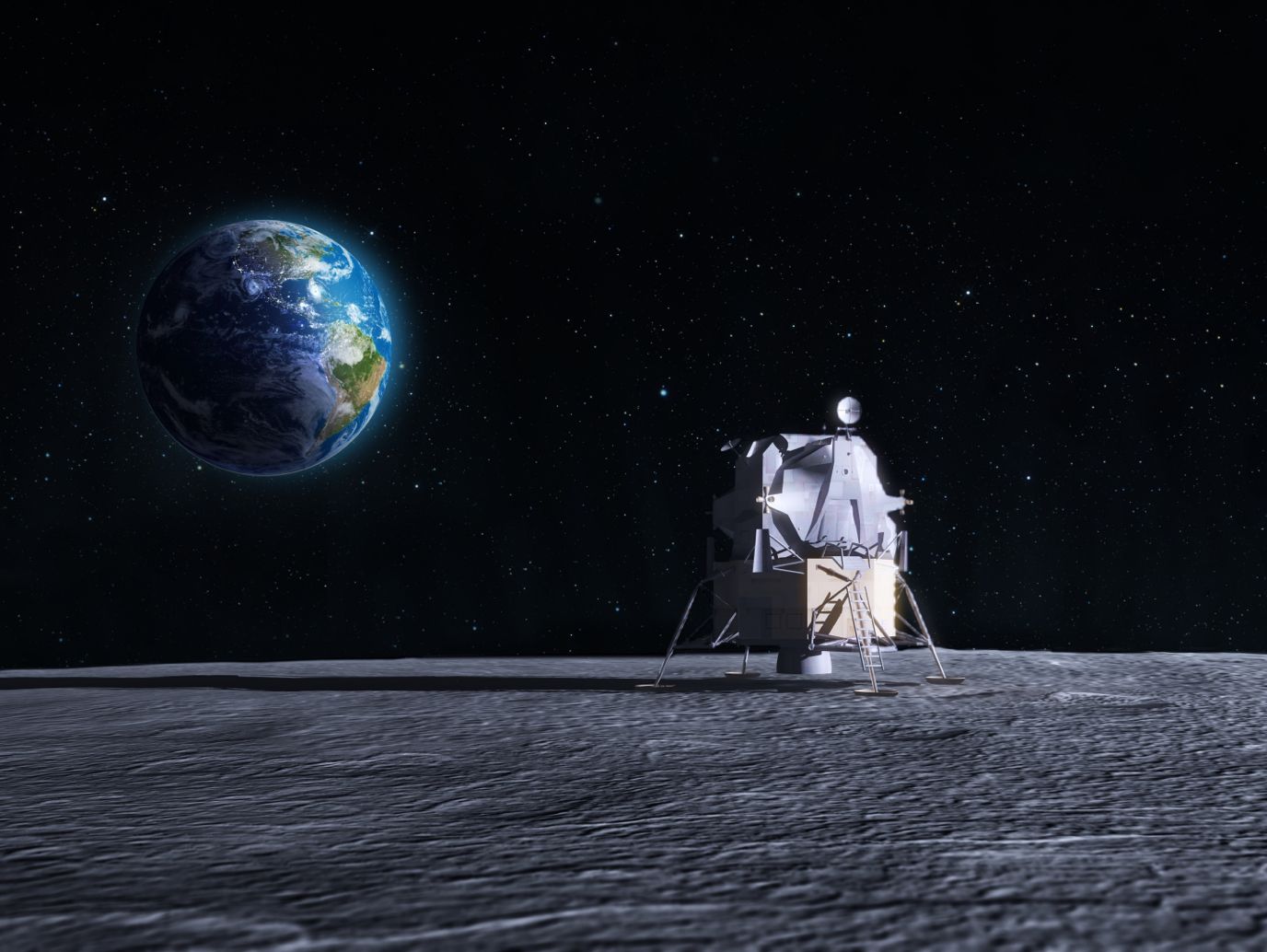
(Adobe)
Moon landers and commercial lunar activity
Intuitive Machines (US) will launch next month, hoping to become the first commercial company to successfully land on the Moon. Astrobotic (US) are looking to follow closely in their footsteps and this week finally received a mission update.
The company are due to launch with ULA on their new Vulcan Centaur rocket, but have faced ongoing delays. They have now revealed that Vulcan is due to launch on Christmas Eve, allowing for Astrobotic to play their role in the growing commercialisation of the lunar economy.
Further to this, Singapore-based company Qosmosys have announced that they have secured $100 million in funding to support their lunar landing effort, using their ZeusX spacecraft. Their mission will consist of a service module, a lander and a rover designed to extract lunar resources, with an aim to launch the mission within 4 years. Furthermore, the company state that their core aim is to extract and utilise lunar resources, such as Helium-3.
(According to their website) “Central to our business model is lunar mining, particularly the extraction of essential resources and minerals like the helium-3 isotope (3He).” Helium-3 could provide the solution to Earth’s energy needs, once nuclear fusion technology can be used at scale.
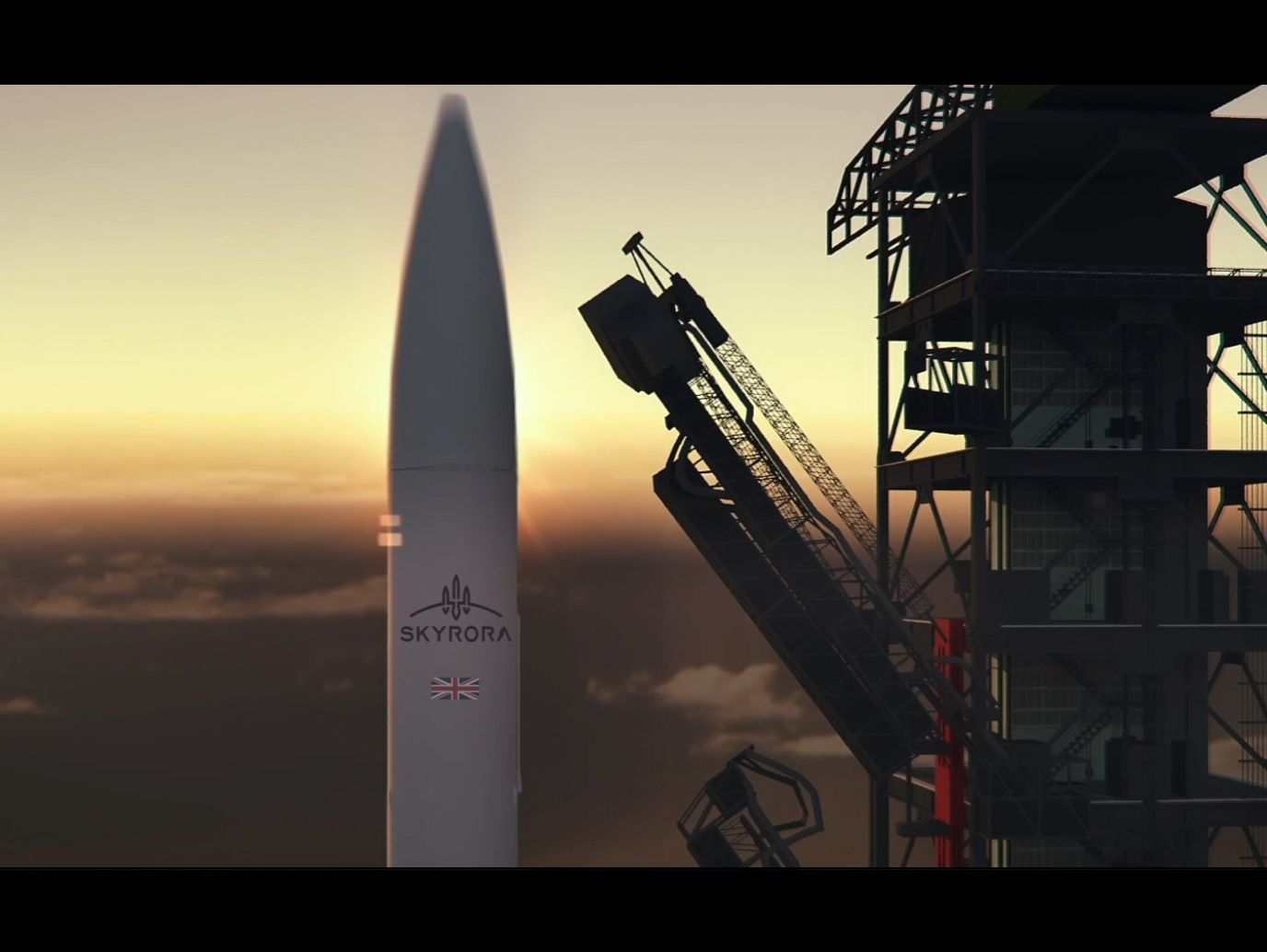
Skyrora (UK) were chosen as part of Boost! (Skyrora)
Australia becoming southern hemisphere leader, EU commercial launch programme and China expand alliance
As as well looking to provide reentry facilities for Varda Space, Australia seems to making progress in the way of becoming the leading space nation in the southern hemisphere.
Head of the state of Western Australia, Roger Cook, has announced a $5 million support for Fugro SpAARC (Fugro's Space Automation, AI and Robotics Control Complex) operations. The funding will build on their operational capability and help bring in international experts, facilitating international space missions from Australia.
Roger Cook said: “…Fugro SpAARC will capitalise on our significant space infrastructure and capabilities to position WA as the Southern Hemisphere's global hub for space operations and exploration.”
Furthermore, it is expected that a first state visit to the US by Australian prime minister, Anthony Albanese, will be used in part to establish an agreement that would allow for US commercial companies to launch from there. “I suspect this will link to the finalization or implementation of the technical safeguards agreement which will allow US commercial launch companies to operate from Australian launch sites,” Bec Shrimpton, national security director at the Australian Strategic Policy Institute, told Breaking Defense.
NASA carried out their first launch from an Australian commercial launch facility last August, but now with increased access for US commercial launch companies, Australia looks set to become a growing force in New Space.
European and Chinese commercial launch reliance
The European Commission and ESA have also taken steps to reach out further to the commercial sector in their quest to establish independent European access to space. The new European Flight Ticket Initiative is designed to boost European launch systems through open competition “…starting with In-orbit Demonstration and Validation (IOD/IOV) needs” (ESA).
The programme will use only European manufactured vehicles, funded through the EU Horizon Europe programme and the ESA Boost! programme, the latter which is used “…to stimulate, encourage, and support the development, deployment, and use of new European commercial space transportation services” (ESA).
The UK Space Agency is also expanding its reliance on commercial partners, as this week they announced that they will work with US-based space infrastructure developer, Axiom Space, in order to facilitate their first commercially sponsored astronaut flight.
China reach out to launch startups and expand alliance
Chinese commercial launch startups also received good news, with the China Manned Space Engineering Office (CMSEO) opening a call for low-cost cargo launches to the Tiangong space station, in May this year.
The chosen proposals came from state entities, but according to Lin Xiqiang, deputy director of CMSEO, a number of the proposals chose launch services provided by the commercial sector.
Chinese launch startups (such as) Landspace, Galactic Energy and Space Pioneer will find this welcoming news as the nation seemingly continue to look to replicate the roaring success of commercialisation in the US.
Yet the biggest news coming out of China this week regards its International Research Station (ILRS) project, a program rivalling the US-led Artemis Accords, aiming to establish a vision and regulatory framework for the future of space. In quick succession, Pakistan and Belarus became the latest members, with the ILRS project now numbering 11 members. The Artemis Accords currently has 29 members.
It seems unlikely still that the US would be willing to join the ILRS project, nor would China be encouraged to join the Artemis Accords, throwing doubt on the ability of the world’s space superpowers to guarantee a peaceful future in outer space.
There was, however, a glimmer of hope as it is understood that officials from both nations recently met at the International Astronautical Congress in Baku, Azerbaijan, in order to discuss how to better share data regarding Space Situational Awareness (SSA) and possibly creating a “federated network” of regional SSA providers.
Guaranteeing safety of operations on orbit of course comes as a benefit for both parties, and so such discussions may not come as a surprise. However, this may at least also offer another means by which these rival nations can begin to foster better relations in space, for the benefit of all.
Share this article
External Links
This Week
*News articles posted here are not property of ANASDA GmbH and belong to their respected owners. Postings here are external links only.

















